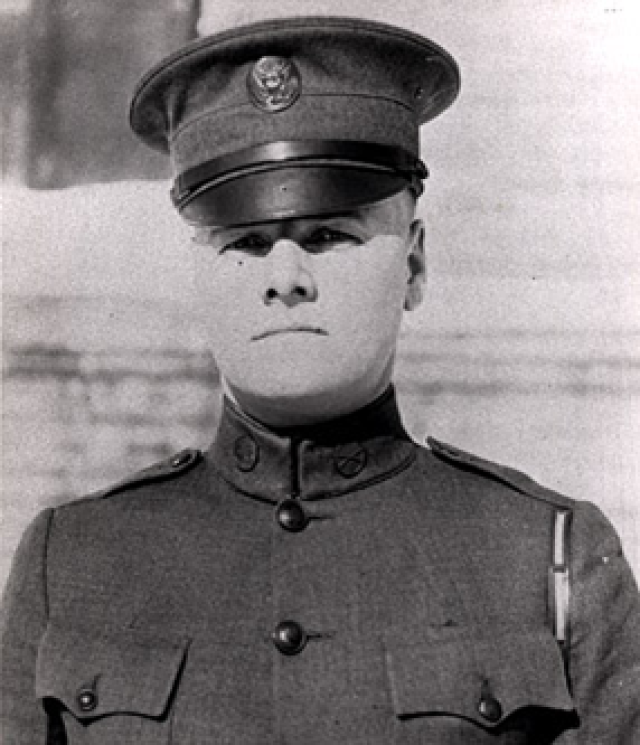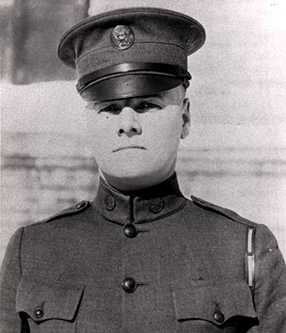An article of faith in the 3rd Infantry is that Old Guardsmen have always worn their "Buff Straps." It is related that when the 3rd Infantry was under the command of General "Mad" Anthony Wayne as part of the Legion of the United States, special Regimental markings were buff piping on their uniforms and black plumes on their hats (General Order dated September 11, 1792). The Regimental colors thus became buff and black. A story also told is that as a distinctive sign, strips of natural buff color rawhide were woven into the black knapsack straps by the men of the Regiment to show off their pride in these distinctive colors. Depending on which account of this you heard this occurred either "in earlier times" or "during the War of 1812." The 3rd Infantry has also been known as the "Buff Sticks" because of its colors and good appearance. A buff stick was a wooden stick with buffing material attached used to polish buttons.
Distinctive Unit Trimmings like the Buff Strap along with metal and enamel Distinctive Unit Insignia, were both first authorized by the War Department in 1921. The idea was imported from British and French units with whom US forces had served in World War I. The intent was to foster esprit, morale, and unit cohesion. The Army Adjutant General sent requests to the commanders of "color bearing" units of the Army, asking them to submit recommendations for something distinctive and specific to each unit. Units were authorized either a trimming or an insignia, but not both.
The Old Guard commander, Colonel Alfred W. Bjornstad, sent in his recommendation for a "Knapsack Strap." The Adjutant General approved the use of the trimming in April 1922. Headquarters, 3rd Infantry published General Order 6, May 26, 1922 implementing the first use of the Knapsack Strap or, as it later became known, the Buff Strap. It was not to be worn by men under arrest or in confinement or by recruits before they started regular duties with their companies. Wear of the Buff Strap was considered to be a special privilege. Headquarters, 3rd Infantry, General Order No. 4, dated April 3, 1924, which superseded the 1922 General Order, stated:
"It is the one distinctive and peculiar marking of the Regiment. It is required therefore that those who wear it shall at all times keep the reputation of the Regiment in mind and shall not fail in soldierly conduct and smartness of appearance."
The origin of the Buff Strap story is unknown. The Old Guard's submission to the Adjutant General in 1922 consisted of the earliest known written version of the story and a drawing of a black leather strap with interwoven buff strips (two buff strips forward, three behind). This drawing is the first known representation of a Buff Strap. The new trimming was to be "worn on the left shoulder of the olive drab coat and overcoat at the junction of the sleeve and shoulder, with two strips of buff showing in the front." The two buff sections in the front and three in the back apparently came about due to the dimensions chosen for the trimming and how it fit on the garments.
It was Colonel Bjornstad's intent to attach the Buff Strap at the top of the shoulder with the insignia now called a "Cockade"-an insignia of bronze in the shape of an 18th Century officer's cocked hat. The use of the Cockade in this manner didn't last, but The Old Guard's Buff Strap is one of only a few Distinctive Unit Trimmings that survives in the United States Army.


Social Sharing